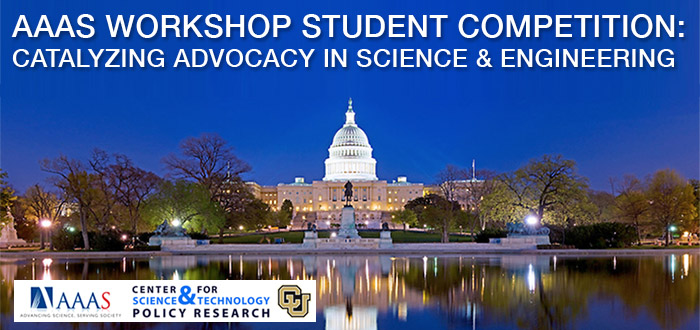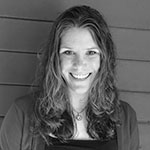
American Association for the Advancement of Science
"Catalyzing Advocacy in Science and Engineering" Workshop Student Competition
Reflections from the AAAS “CASE” Workshop
Sarah Welsh-Huggins
Civil, Architectural, and Environmental Engineering University of Colorado Boulder
 Our time in D.C. was well-organized, thought-provoking, and for this future science policy-maker, a lot of fun. In three jam-packed days, we were introduced to the worlds of science for policy and policy for science, and what it means to be an effective leader in each. What do NASA and the FBI have in common? Their funding comes from the same congressional appropriations committee. What, then, is an appropriations bill? How does that differ from an allocation bill? Each session was thoughtfully designed to shape our understanding of a distinct piece of the policy puzzle. We scientists love to use long sentences with too many semi-colons and multi-syllabic words, but as the workshop taught us, politicians and their teams don’t have time to review every 30 page journal article on climate paleontology. What story can you tell about your work, and why it matters, they asked us, in three brief, yet informative bullet points? Policy is not just decisions made by our elected officials, however, as I learned from a Congressional Research Specialist at the Library Congress, who has worked on the Hill for over 40 years. She graced us with a short version of the day-long lecture she gives every freshmen class of Senators and Representatives on how Congress “really” works. She and all of the congressional staffers, university public relations lobbyists, and science policy officials with whom we met demonstrated how much policy-making depends on the thousands of behind the scenes actors working each day out of the limelight.
Our time in D.C. was well-organized, thought-provoking, and for this future science policy-maker, a lot of fun. In three jam-packed days, we were introduced to the worlds of science for policy and policy for science, and what it means to be an effective leader in each. What do NASA and the FBI have in common? Their funding comes from the same congressional appropriations committee. What, then, is an appropriations bill? How does that differ from an allocation bill? Each session was thoughtfully designed to shape our understanding of a distinct piece of the policy puzzle. We scientists love to use long sentences with too many semi-colons and multi-syllabic words, but as the workshop taught us, politicians and their teams don’t have time to review every 30 page journal article on climate paleontology. What story can you tell about your work, and why it matters, they asked us, in three brief, yet informative bullet points? Policy is not just decisions made by our elected officials, however, as I learned from a Congressional Research Specialist at the Library Congress, who has worked on the Hill for over 40 years. She graced us with a short version of the day-long lecture she gives every freshmen class of Senators and Representatives on how Congress “really” works. She and all of the congressional staffers, university public relations lobbyists, and science policy officials with whom we met demonstrated how much policy-making depends on the thousands of behind the scenes actors working each day out of the limelight.
